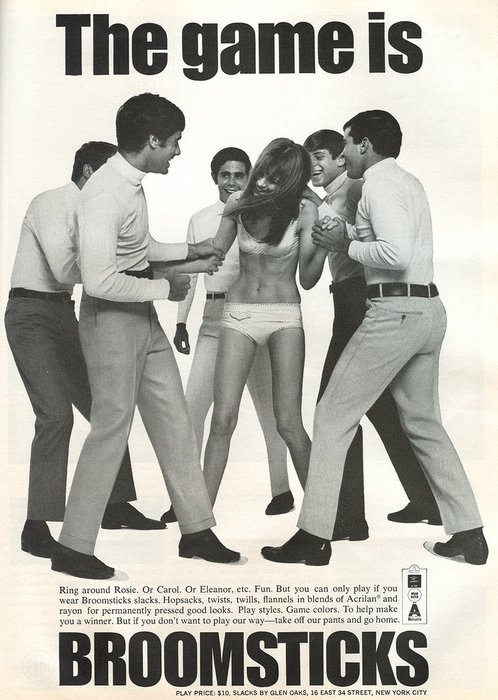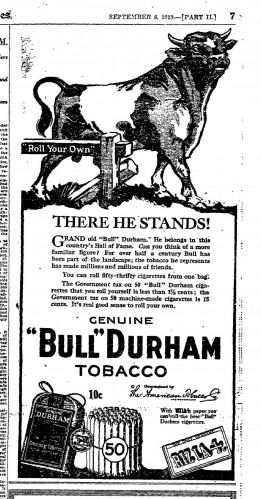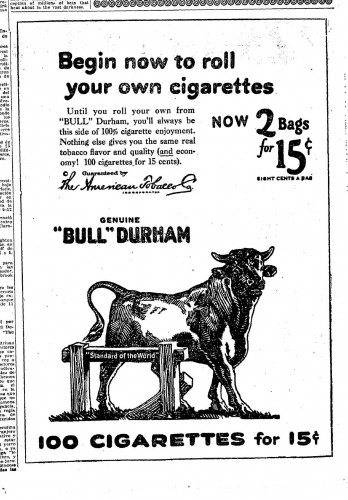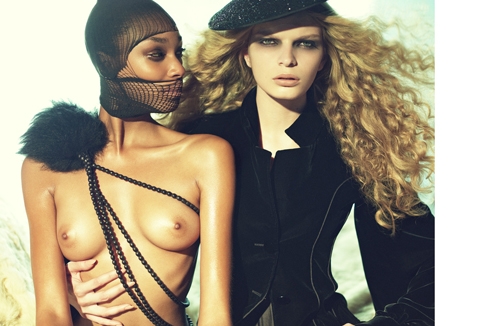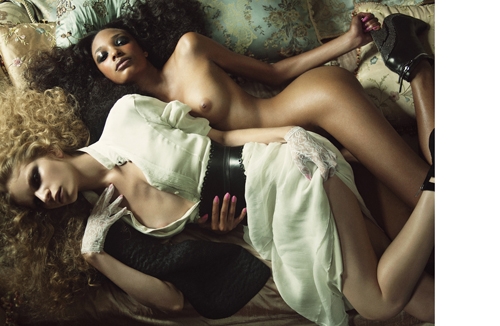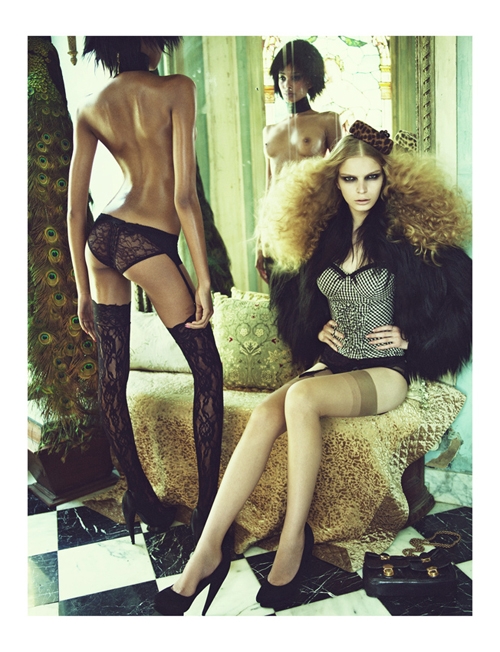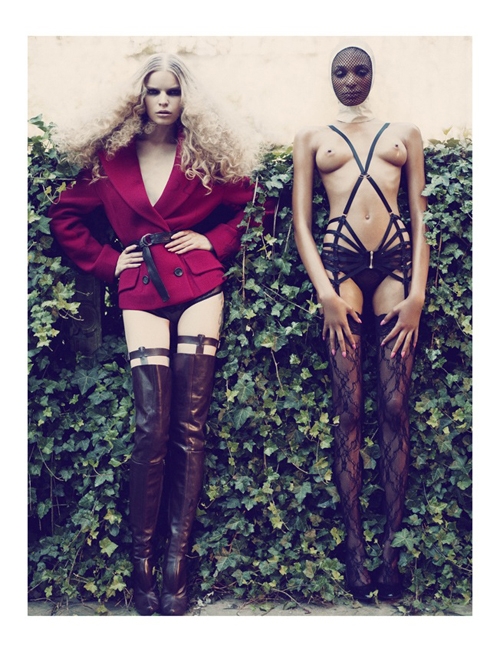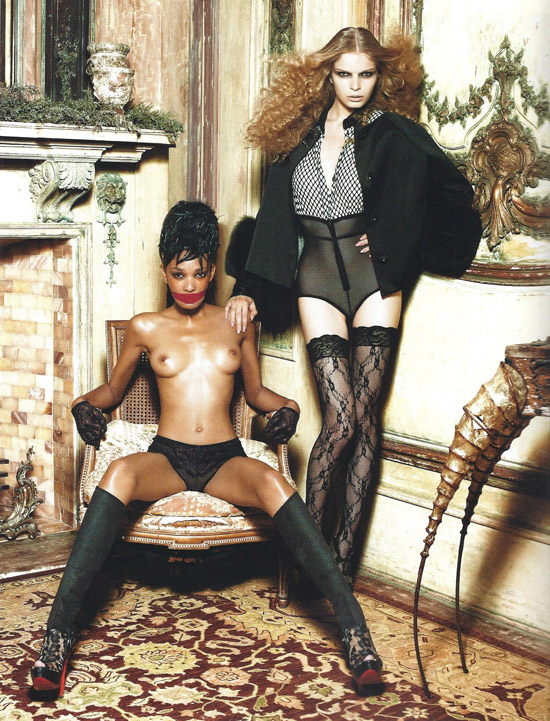Once again Larry at The Daily Mirror dug up something interesting from the L.A. Times archives. It’s a 1969 article about–gasp!–a female ranch hand. What’s fascinating is the way that, while discussing how she does things that aren’t traditionally considered female, the reporter describes her in ways that emphasize her femininity so we know she’s not completely un-womanly.
She’s as cute as all get-out and as strong as a heifer. She’s the only female ranch-hand (“don’t call me a cowgirl, it’s a dude term”)…
…”I was never quite like all the other little girls.” Beverly always wanted to be a cowboy–always wore bluejeans to school…
But she also succeeded in remaining ultrafeminine in an impish sort of way…She bemoans the fact that she has to keep her hair trimmed to a maximum of two inchles all over her head…
And:

Text:
“I enjoy working,” she said. “I don’t whine or cry when there is a lot to do. I love my job.” For this she is known as “comadrie,” meaning little mother…”
She’s also described as “coy”:

But to the likely relief of many readers, she goes on to say that probably she eventually will get married. Reading the entire article, I can’t help but suspect that’s more out of a sense that you have to than a real desire on her part. She kind of reminds me of my grandma, who I think got married and had kids mostly because what else could a woman do? I suspect if she’d been able to get a job as a ranch hand, she would have happily done that instead.
And while they don’t call her a “cowgirl,” this title from the second page of the article might not be what she was hoping for instead:

Now, if this was just an historical curiosity, I wouldn’t have posted it. But the thing is, we still see this type of emphasis on the femininity of women who succeed at things we consider “men’s work.” For instance, see this post on WNBA player Candace Parker, or Lisa’s post about Caster Semenya. Or even just compare the uniforms of male and female athletes. We’re more comfortable with women who break some gender rules as long as they maintain their femininity by following other rules.
Gwen Sharp is an associate professor of sociology at Nevada State College. You can follow her on Twitter at @gwensharpnv.
